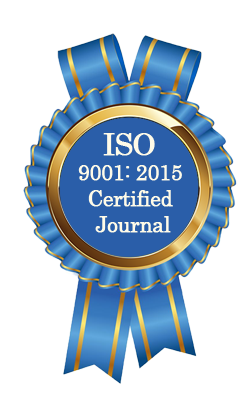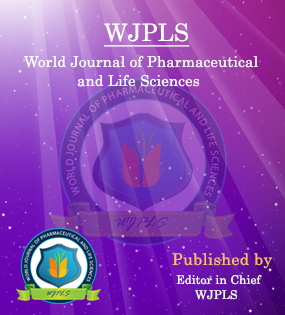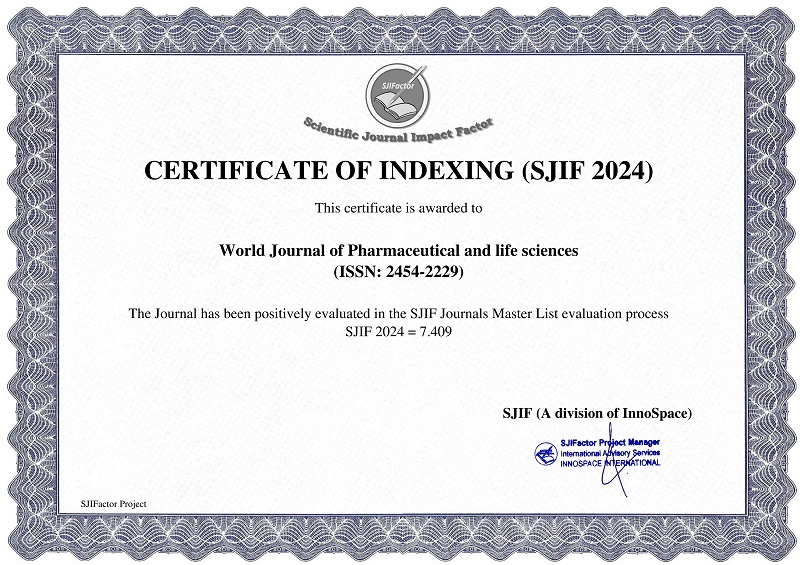Abstract
PROSPECTIVE OBSERVATIONAL STUDY ON ASSESSMENT OF CLINICAL PROFILE, PREVALENCE, SEVERITY AND DRUGS USED TO TREAT STROKE
Dr. Fatima Khatoon*, Dr. Syed Mohammed Kazim, Dr. M. A. Aleem, Dr. Juveria Badar, Ifra Maheen, Maliha Habeeb and Syeda Mehek Fatima
ABSTRACT
Introduction: Stroke is the second most prevalent cause of mortality worldwide after ischemic heart disease, it is the most prevalent neurological illness that is life-threatening worldwide, the primary cause of impairment among the aged, and has an impact on people, their families, and society as a whole. The current study's objectives include figuring out the prevalence of stroke, examining the clinical and radiological profile of stroke, figuring out how severe a stroke is, figuring out the risk factor profile, and enhancing stroke care. Methodology: 170 stroke patients participated in the current cross-sectional observational study, which was carried out in a tertiary care hospital. Both IP and OP patients were taken into this study. Prevalence of stroke and its types were assessed. Demographic details, clinical profile, severity assessment was done among 170 patients with stroke. Results: In this study, among the study population 170, 90 were females and 80 were males, which shows that stroke was more prevalent in females followed by males. In this study, Stroke was more in the age group 61 to 70, followed by >=71, 51-60, 41-50 and less than 40 year age groups. In this study, majority of the patients have ischemic stroke followed by hemorrhagic stroke and TIA. As per this study, prevalence of ischemic stroke is high followed by hemorrhagic stroke and TIA. Majority of the patients were unable to move their limbs followed by mouth deviation, slurred speech, loss of vision, altered sensorium, convulsions, headache, vomiting and loss of consciousness. In this study, National Institutes of Health Stroke Scale was used to assess severity of stroke in patients. Most of the patients had minor stroke followed by moderate, moderate to severe and severe stroke. In this study multiple risk factors were observed among the stroke patients. Most of the patients had hypertension followed by diabetes, smoking, alcohol, history of stroke, hyperlipidemia, obesity, family history of stroke, heart diseases, physical inactivity and chronic kidney disease. Conclusion: Our study demonstrates that the prevalence of stroke is rising and gets worse as people get older. The age range of more than 61 to 70 was where the great majority of patients with stroke belonged. Prevalence of stroke is high in females. Hemiplegia, or the inability of most patients to move both their upper and lower limbs, was the most frequent clinical symptom. Other symptoms included mouth deviation, slurred speech, loss of eyesight, altered sensorium, convulsions, headache, vomiting, and loss of consciousness. In summary, our research on patients with stroke indicates that ischemic brain stroke is more common than hemorrhagic brain stroke, and that females are more likely than males to get an ischemic brain stroke.
[Full Text Article] [Download Certificate]WJPLS CITATION 
| All | Since 2020 | |
| Citation | 590 | 424 |
| h-index | 12 | 10 |
| i10-index | 17 | 14 |
INDEXING
NEWS & UPDATION
BEST ARTICLE AWARDS
World Journal of Pharmaceutical and life sciences is giving Best Article Award in every Issue for Best Article and Issue Certificate of Appreciation to the Authors to promote research activity of scholar.
Best Article of current issue
Download Article : Click here





